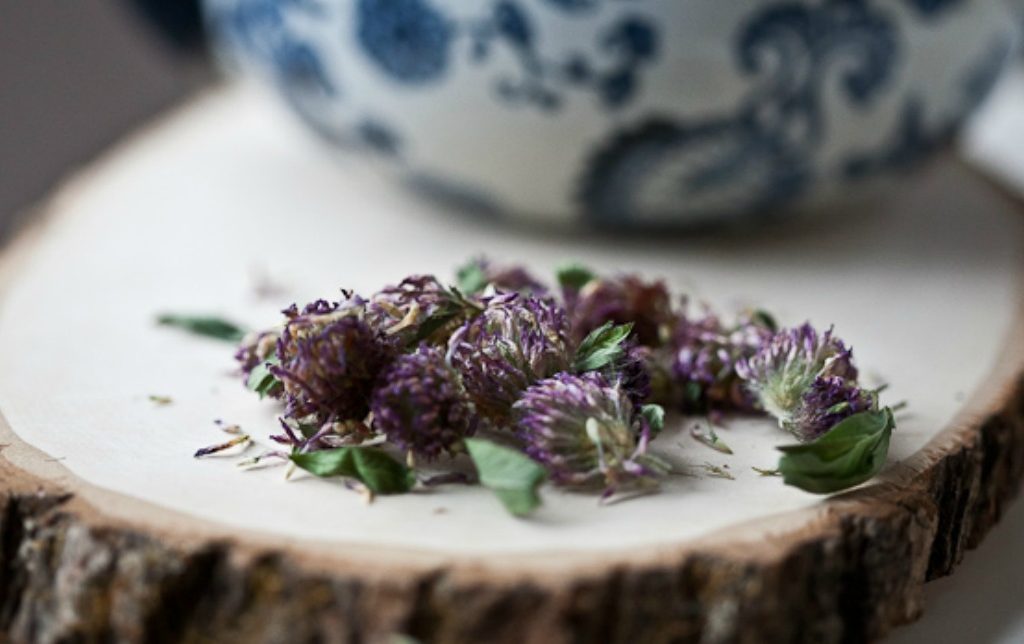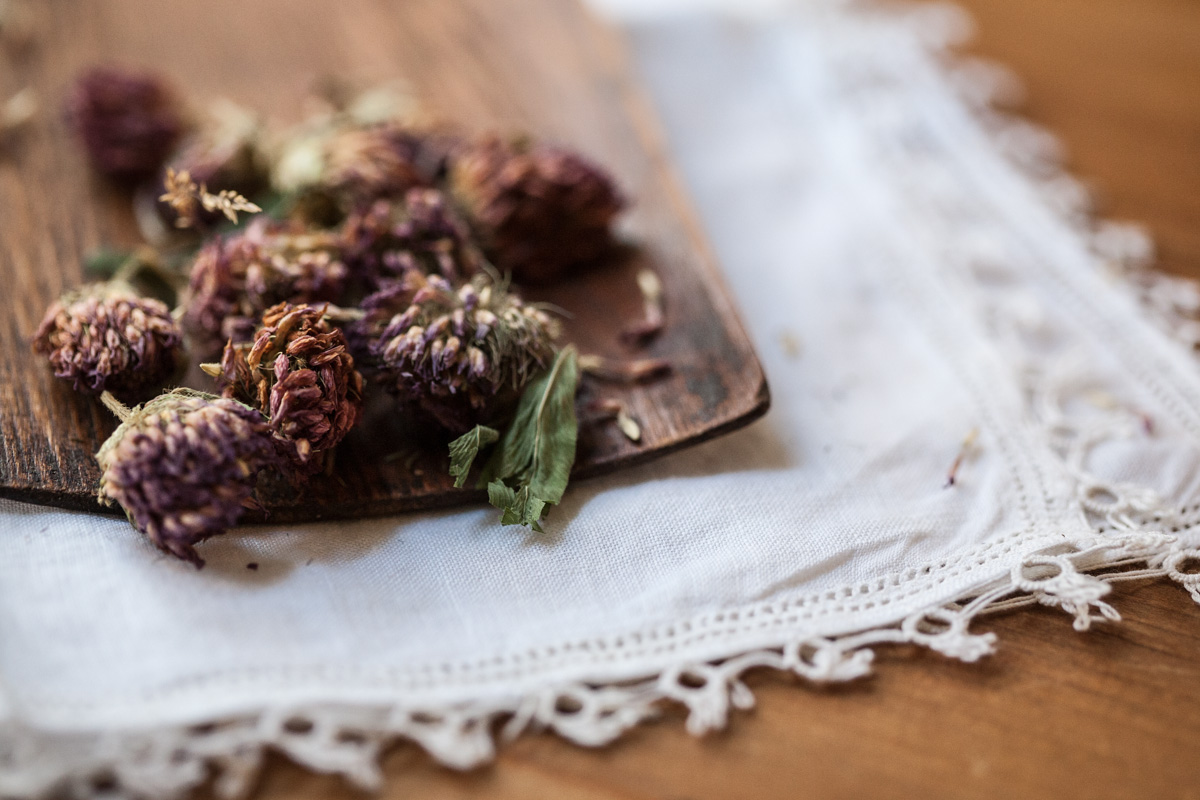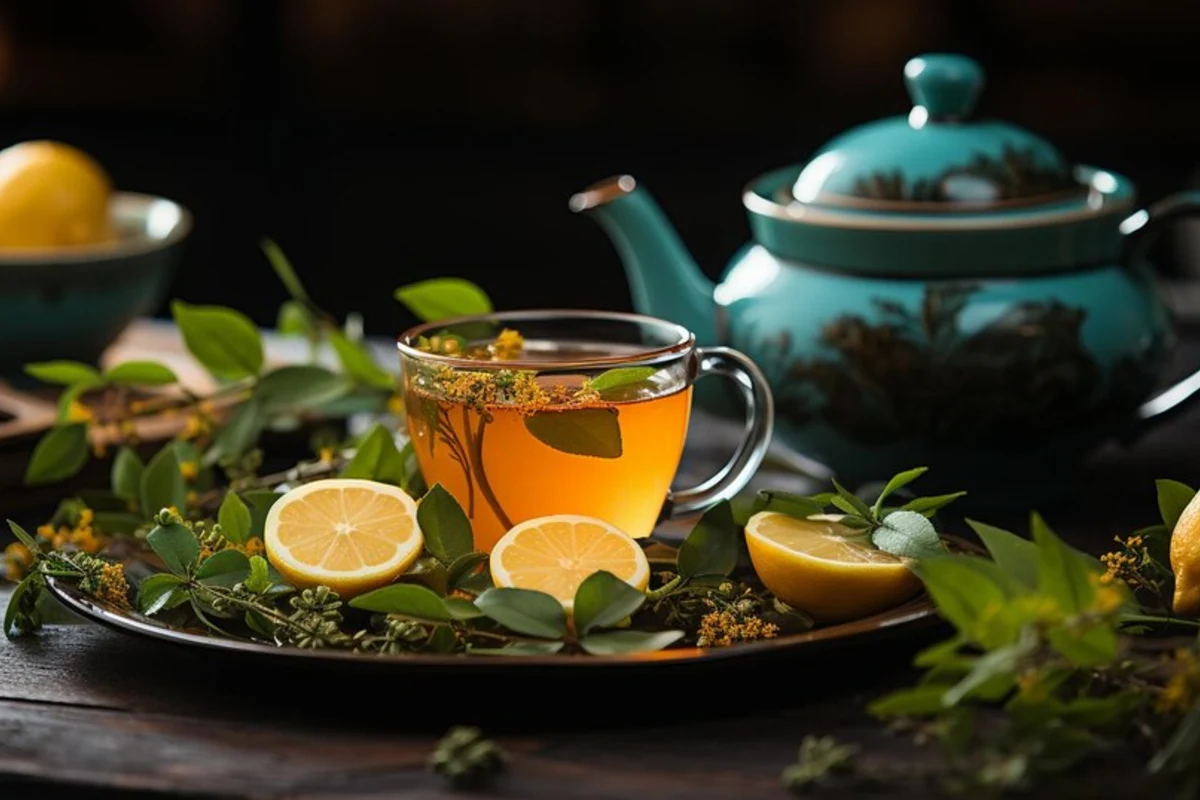If you are looking for a natural remedy that has been used for centuries, you might want to consider Yarrow. Yarrow is a flowering plant that belongs to the Asteraceae family, along with chamomile, daisy, and sunflower. It grows in many parts of the world, especially in North America, Asia, and Europe. Yarrow has a scientific name of Achillea millefolium, which means “thousand-leaved” in Latin. This refers to its feathery leaves that resemble ferns.

Why is Yarrow So Beneficial?
Yarrow has a lot of health benefits, thanks to its rich content of phytochemicals. Phytochemicals are natural compounds that plants produce to protect themselves from pests, diseases, and environmental stress. Some of these phytochemicals have beneficial effects on human health as well. Yarrow contains phenols, flavonoids, and sesquiterpenoids, which are known to have anti-inflammatory, antibacterial, antioxidant, and anticancer properties. These phytochemicals can help with various health issues, such as:
- Wound healing: Yarrow has been used since ancient times to treat wounds and stop bleeding. It was even named after Achilles, the legendary Greek hero who used it to heal his soldiers’ wounds during the Trojan War. Yarrow can help with wound healing by stimulating blood clotting, reducing inflammation, and preventing infection.
- Digestive health: Yarrow can help with digestive problems such as indigestion, diarrhea, ulcers, and irritable bowel syndrome. It can soothe the stomach and intestines by relaxing the smooth muscles and reducing spasms. It can also stimulate the secretion of bile and pancreatic enzymes, which aid in digestion and absorption of nutrients.
- Respiratory health: Yarrow can help with respiratory problems such as colds, flu, bronchitis, asthma, and allergies. It can relieve congestion, coughing, and sore throat by loosening mucus and opening up the airways. It can also boost the immune system and fight off viruses and bacteria that cause respiratory infections.
- Women’s health: Yarrow can help with women’s health issues such as menstrual cramps, irregular periods, heavy bleeding, menopause symptoms, and uterine fibroids. It can regulate hormonal balance and reduce inflammation and pain in the reproductive organs. It can also improve blood circulation and prevent blood clots that can lead to strokes or heart attacks.
How to Use Yarrow Safely and Effectively?
Yarrow is available as a dietary supplement in various forms, such as capsules, tablets, tinctures, teas, or creams. However, not all supplements are created equal. Some may contain contaminants or additives that can harm your health. Therefore, it is important to choose a reputable brand that has been tested by a third-party organization such as USP, ConsumerLab, or NSF. These organizations verify the quality, purity, potency, and safety of supplements.
However, even if you choose a high-quality supplement, you should still consult your doctor before using it. Yarrow may interact with some medications or medical conditions that you have. For example:
- If you are taking blood thinners or have a bleeding disorder, you should avoid Yarrow because it can increase your risk of bleeding.
- If you are allergic to plants in the Asteraceae family or have hay fever or asthma, you should avoid Yarrow because it can trigger allergic reactions or worsen your symptoms.
- If you are pregnant or breastfeeding, you should avoid Yarrow because it can affect your hormones or pass into your milk and harm your baby
How Yarrow Can Heal Wounds Faster
Yarrow is a herb that has been used for centuries to treat wounds and stop bleeding. It has astringent, anti-inflammatory, and antimicrobial properties that can help speed up the healing process. However, there is not much scientific evidence to support its effectiveness. One study found that Yarrow cream improved the healing of episiotomies, but more research is needed to confirm its benefits for other types of wounds.
How Yarrow Can Improve Skin Health
Yarrow is also a popular ingredient in skincare products, as it is believed to have anti-inflammatory and antioxidant effects on the skin. It may help reduce redness, irritation, and inflammation caused by various factors. A study showed that Yarrow extract reduced the skin’s response to an irritant, but more studies are required to understand how it works and what doses are optimal.
How Yarrow Can Relieve Menstrual Pain
Yarrow may also be a natural remedy for menstrual cramps, or dysmenorrhea. It has antispasmodic and analgesic properties that may help relax the uterine muscles and ease the pain. A study found that Yarrow capsules reduced the severity and duration of menstrual pain in young women, but more research is needed to see if it works for other groups and how it compares to conventional treatments.
How Yarrow Can Help with Multiple Sclerosis
Yarrow may also have a potential role in the management of multiple sclerosis, a chronic neurological disorder that affects the central nervous system. It may have neuroprotective and immunomodulatory effects that could help prevent or reduce the damage caused by the disease. A study found that Yarrow extract reduced the number of relapses and improved the cognitive function of patients with multiple sclerosis, but more trials are needed to confirm its safety and efficacy.
How Yarrow Can Ease IBS Symptoms
Yarrow may also be beneficial for people with irritable bowel syndrome (IBS), a common digestive disorder that causes abdominal pain, bloating, diarrhea, and constipation. It may have antispasmodic and anti-inflammatory effects that could help calm the intestinal spasms and inflammation that trigger the symptoms. A study found that a herbal blend containing Yarrow reduced the symptoms of IBS, but it is not clear how much of the effect was due to Yarrow alone. More studies are needed to isolate its specific effects and determine the optimal dosage.
How Yarrow May Have Other Health Benefits
Yarrow is a versatile herb that may have many other health benefits, such as fighting bacterial infections, respiratory viruses, high blood sugar, anxiety, liver damage, and even cancer. However, most of these claims are based on animal or laboratory studies, and there is not enough evidence to support its use in humans. More research is needed to establish its safety, effectiveness, and possible interactions with other drugs or herbs.
Unmasking Yarrow’s Side Effects and Precautions
Yarrow is a herb that has been used for centuries for various purposes, such as healing wounds, relieving fever, and stimulating digestion. However, like any other natural remedy, Yarrow also has some side effects and precautions that you should be aware of before using it. In this blog post, we will explore the common and severe side effects of Yarrow, the precautions for different groups of people, the dosage recommendations, the overdose risks, and the possible interactions with other substances.
Common Side Effects
Yarrow is generally considered safe when used in moderation and according to the directions. However, some people may experience skin irritation or allergic reactions from applying Yarrow topically or inhaling its essential oil. These reactions may include rash, itching, redness, swelling, or difficulty breathing. If you have sensitive skin or a history of allergies, you should do a patch test before using Yarrow on your skin or in aromatherapy.
Another possible side effect of Yarrow is its diuretic effect, which means it can increase the amount of urine you produce. This can be beneficial for some conditions, such as urinary tract infections or kidney stones, but it can also cause dehydration or electrolyte imbalance if you don’t drink enough fluids. Moreover, if you have a medical condition that affects your kidney function or fluid balance, such as diabetes or heart failure, you should consult your doctor before using Yarrow as a diuretic.
Severe Side Effects
Although rare, some people may experience severe side effects from consuming too much Yarrow tea or extract. One case report documented a woman who developed symptoms of anticholinergic poisoning after drinking 2 liters of Yarrow tea per day for several weeks. Anticholinergic poisoning is a condition where the nervous system is overstimulated by substances that block the action of a neurotransmitter called acetylcholine. The symptoms may include dry mouth, blurred vision, confusion, hallucinations, seizures, coma, and even death.
The exact mechanism of how Yarrow causes anticholinergic poisoning is not clear, but it may be related to some of its constituents, such as thujone or sesquiterpenes. However, there is not enough scientific evidence to establish the safe or toxic doses of Yarrow or its components. Therefore, it is important to use Yarrow with caution and moderation, and to monitor for any signs of adverse reactions.
Some people should avoid using Yarrow altogether or use it only under medical supervision. These include:
- Pregnant women: Yarrow contains thujone, a substance that can stimulate uterine contractions and cause miscarriage or premature labor. There is also a risk of birth defects from exposure to thujone during pregnancy. Therefore, pregnant women should not use Yarrow in any form.
- Breastfeeding women: There is not enough information on the safety of Yarrow for nursing mothers and their infants. Therefore, breastfeeding women should avoid using Yarrow or consult their doctor before doing so.
- Children: Yarrow may be too strong for children’s delicate systems and cause unwanted effects. There is also a risk of Reye’s syndrome, a rare but serious condition that affects the brain and liver of children who have viral infections and take aspirin or aspirin-like substances. Yarrow contains salicylates, which are similar to aspirin. Therefore, children under 18 years old should not use Yarrow without medical advice.
- People with bleeding disorders or taking blood thinners: Yarrow has antiplatelet and anticoagulant properties, which means it can prevent blood clots from forming or dissolve existing ones. This can be beneficial for some conditions, such as stroke or heart attack prevention, but it can also increase the risk of bleeding or bruising. Therefore, people with bleeding disorders or taking blood thinners, such as warfarin or heparin, should avoid using Yarrow or consult their doctor before doing so.
- People with allergies to plants in the same family as Yarrow: Yarrow belongs to the Asteraceae family, which includes many other plants that can cause allergic reactions in some people. These include chamomile, ragweed, chrysanthemums,
marigolds, daisies, sunflowers, and others. If you are allergic to any of these plants,
you may also be allergic to Yarrow and should avoid using it.
Dos and Don’ts: Deciphering Yarrow Dosage
There is no standard dosage for Yarrow that applies to everyone. The dosage may vary depending on the form of Yarrow you use (tea, tincture, capsule), the purpose of using it (wound healing, fever reduction, digestion support), your age, weight, health status, and other factors. However, here are some general guidelines to help you use Yarrow safely and effectively:
- Do follow the instructions on the product label or consult your doctor or herbalist for the appropriate dosage for your condition and needs.
- Do start with a low dose and gradually increase it if needed, until you achieve the desired effect or reach the maximum recommended dose.
- Do drink plenty of water and stay hydrated when using Yarrow as a diuretic or to treat fever.
- Don’t exceed the recommended dose or use Yarrow for longer than advised, as this may increase the risk of side effects or toxicity.
- Don’t use Yarrow if you are pregnant, breastfeeding, under 18 years old, have a bleeding disorder, or take blood thinners, unless your doctor approves it.
- Don’t use Yarrow if you are allergic to it or to any plants in the same family.
Safety First: What If You Take Too Much Yarrow?
If you accidentally or intentionally take too much Yarrow, you may experience symptoms of overdose or poisoning, such as nausea, vomiting, diarrhea, abdominal pain, headache, dizziness, drowsiness, confusion, hallucinations, seizures, coma, or death. If you suspect that you or someone else has taken too much Yarrow, you should seek immediate medical attention. Call 911 or your local poison control center and provide them with the following information:
- The name and amount of the product you took
- The time and date you took it
- Your age, weight, and health status
- Any other medications or supplements you are taking
- Any symptoms you are experiencing
The Intricacies of Yarrow’s Interactions
Yarrow may interact with other substances that you take, such as prescription medications, over-the-counter drugs, herbal supplements, vitamins, minerals, or foods. These interactions may enhance or reduce the effects of either substance, or cause unwanted side effects or complications. Therefore,
it is important to be aware of the potential interactions of Yarrow and to inform your doctor or pharmacist of all the substances you are taking before using Yarrow. Some of the possible interactions of Yarrow include:
- Anticoagulants and antiplatelets: These are drugs that prevent blood clots from forming or dissolve existing ones. They include warfarin, heparin, aspirin, clopidogrel, and others. Yarrow may increase the effects of these drugs and cause excessive bleeding or bruising.Therefore, you should avoid using Yarrow if you take these drugs or consult your doctor before doing so.
- Sedatives and antidepressants: These are drugs that affect the nervous system and cause relaxation,
sleepiness, or mood improvement. They include benzodiazepines, barbiturates, antihistamines, opioids, SSRIs, SNRIs, and others. Yarrow may enhance the effects of these drugs and cause excessive drowsiness, confusion, or respiratory depression. Therefore, you should avoid using Yarrow if you take these drugs or consult your doctor before doing so. - Lithium: This is a drug that is used to treat bipolar disorder and other mental conditions. It affects the levels of certain chemicals in the brain that regulate mood and behavior. Yarrow may reduce the excretion of lithium from the body and increase its levels in the blood. This may cause lithium toxicity, which can manifest as nausea, vomiting, diarrhea, tremors, muscle weakness, confusion, seizures, coma, or death. Therefore, you should avoid using Yarrow if you take lithium or consult your doctor before doing so.
Storing Yarrow: Tips for Long-Lasting Potency
If you buy commercially available Yarrow products, such as tea bags, capsules, tinctures, or creams, you should store them according to the instructions on the package label. Usually, these products should be kept in a cool, dry, and dark place away from heat, light, and moisture. You should also check the expiration date and discard any expired products.
If you harvest your own Yarrow plants or buy fresh ones from a reliable source, you should dry them properly before storing them for later use. You can dry them by hanging them upside down in a well-ventilated area away from direct sunlight until they are brittle and crumbly. You can then store them in an airtight container in a cool, dry, and dark place. You should use them within a year or discard them if they lose their color, aroma, or potency.
Yarrow is a versatile herb that can offer many benefits for your health and well-being. However, it also has some side effects and precautions that you should be aware of before using it. By following the tips in this blog post, you can use Yarrow safely and effectively for your needs.






















